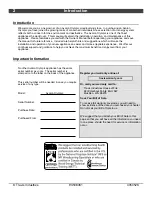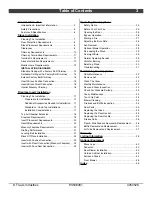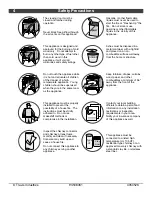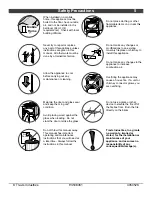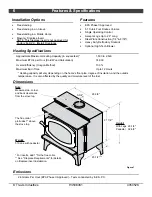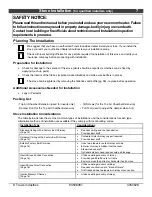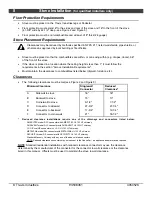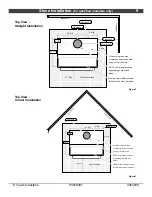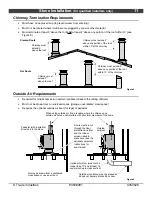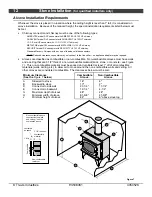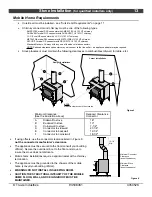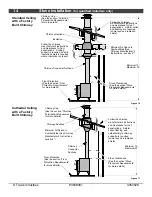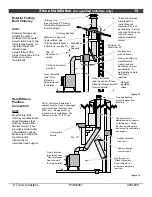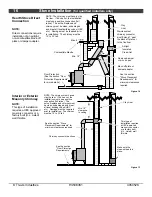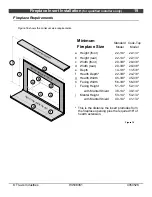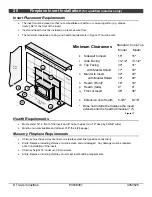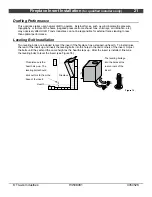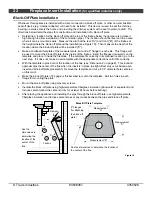
Stove Installation
(for qualified installers only)
7
© Travis Industries
93508061
4050526
SAFETY NOTICE:
Please read this entire manual before you install and use your new room heater. Failure
to follow instructions may result in property damage, bodily injury, or even death.
Contact local building or fire officials about restrictions and installation inspection
requirements in your area.
Planning The Installation
We suggest that you have an authorized Travis Industries dealer install your stove. If you install the
stove yourself, your authorized dealer should review your installation plans.
Check with local building officials for any permits required for installation of this stove and notify your
insurance company before proceeding with installation.
Preparation for Installation
•
Check for damage to the exterior of the stove (dents should be reported, scratches can be fixed by
applying touch up paint).
•
Check the interior of the firebox (replace cracked firebrick and make sure baffle is in place).
The stove can be lightened by removing the firebricks and baffle (pg 36) - replace before operation.
Additional Accessories Needed for Installation
•
Legs or Pedestal
Packing List
• Top Air Chamber Extension (used for inserts only)
• (4) Screws (for the Top Air Chamber Extension)
• Damper Rod (for the Top Air Chamber Extension)
• Pull Tool (used to adjust the damper when hot)
Stove Installation Considerations
The table below details the six most common types of installations and the considerations for each type.
Alternative methods of installation are available if they comply with local building codes.
Installation Type
Considerations
Standard Ceiling with a Factory Built Chimney
(Page 14)
•
Requires ceiling and roof penetration
•
Provides best draft
Cathedral Ceiling with a Factory Built Chimney
(Page 14)
•
Cathedral style chimney support required
•
Provides best draft
Exterior Factory Built Chimney
(Page 15)
•
Uses two elbows to route chimney outside
•
Exterior chimney is hidden from the room
•
Elbows reduce draft
•
Optional exterior chase reduces cold air blockage
Hearth Stove Positive Connection
(Page 15)
•
Utilizes existing masonry chimney
•
Provides good draft due to full reline
•
Easier to clean than direct or horizontal hearth stove
Hearth Stove Direct Connection
(Page 16)
•
Utilizes existing masonry chimney
•
Requires construction of a "block-off plate"
•
Draft reduced due to elbows & chimney cross section
Interior Masonry Chimney
(Page 16)
•
Utilizes existing masonry chimney


